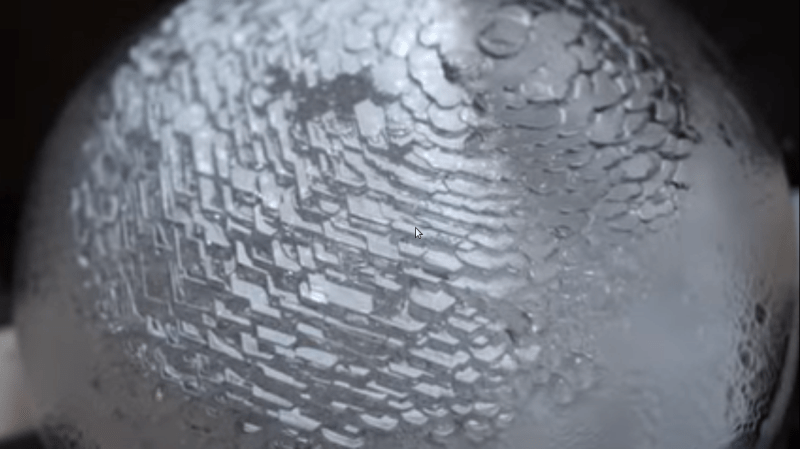Plenty of areas around the world don’t get any snowfall, so if you live in one of these places you’ll need to travel to experience the true joy of winter. If you’re not willing to travel, though, you could make some similar ice crystals yourself instead. While this build from [Brian] aka [AlphaPhoenix] doesn’t generate a flurry of small ice crystals, it does generate a single enormous one in a very specific way.
The ice that [Brian] is growing is created in a pressure chamber that has been set up specifically for this hexagonal crystal. Unlike common ice that is made up of randomly arranged and varying crystals frozen together, this enormous block of ice is actually one single crystal. When the air is pumped out of the pressure chamber, the only thing left in the vessel is the seed crystal and water vapor. A custom peltier cooler inside with an attached heat sink serves a double purpose, both to keep the ice crystal cold (and growing) and to heat up a small pool of water at the bottom of the vessel to increase the amount of water vapor in the chamber, which will eventually be deposited onto the crystal in the specific hexagonal shape.
The build is interesting to watch, and since the ice crystal growth had to be filmed inside of a freezer there’s perhaps a second hack here which involved getting the camera gear set up in that unusual environment. Either way, the giant snowball of an ice crystal eventually came out of the freezer after many tries, and isn’t the first time we’ve seen interesting applications for custom peltier coolers, either.















There is some mention of “Ice transistor” in this document. https://www.researchgate.net/figure/Mobilities-of-charge-carriers-in-ice_tbl1_235191013 Can you check electrical properties, please? Thank you.
Let’s follow the lenticular lens nomenclature and call it a monocrystalline monocrystal. :-D
Now if there can be crystal clear monocrystalline ice blocks, that would be some BS to sell liquor aficionados. Tell them it doesn’t alter the taste of their hooch like ordinary ice.
World’s largest snowflake? Go to any university, there are hundreds of them just walking around.
Don’t trip and cut yourself on that edge. Or do, I’m not your dad.
If you want some deep (but still incomplete) insights into the subject and the methods used in researching it see: Libbrecht, K. (1932). Snow Crystals. Nature, 129, 778-779.
I sense an entitlement joke in here somewhere…